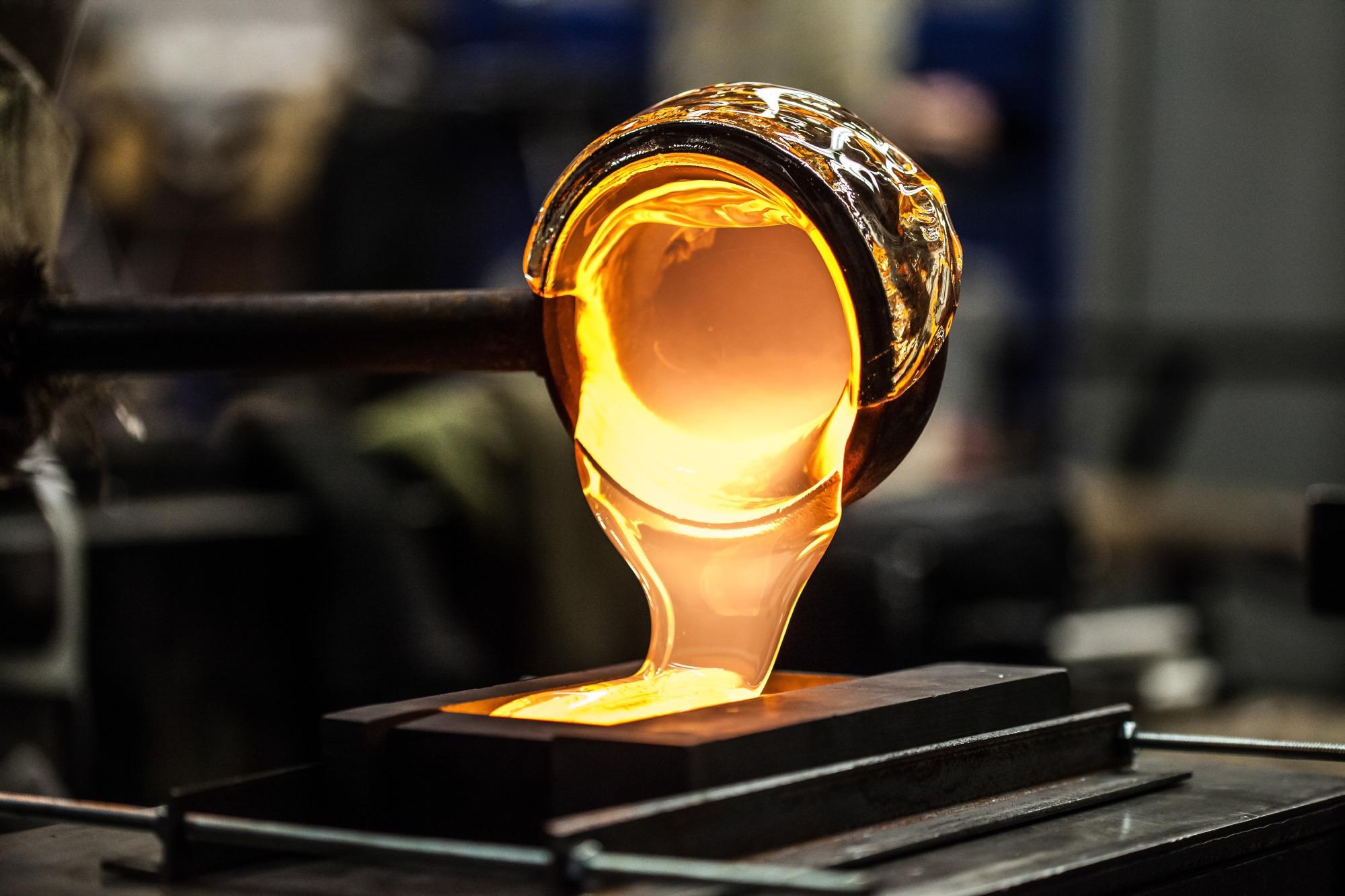Researchers have discovered a new state of matter, a liquid glass that has remained hidden for two decades. The discovery could help scientists see through this ubiquitous material’s secrets.

Image Credit: Benoit Daoust/shutterstock
An entirely new state of matter has been discovered by researchers at the University of Konstanz. The ‘liquid glass’ found by the team has been the subject of speculation in the scientific community for around 20 years. The researchers believe that it could both answer lingering questions about glass whilst simultaneously adding a layer of complexity to one of mankind’s most trusted materials.
The research team, led by professors Andreas Zumbusch from the Department of Chemistry, and Matthias Fuchs from the Department of Physics, used a model system consisting of tailor-made colloids — solid particles at a micrometer scale that makes them excellently suited to investigation with optical microscopes — with an ellipsoid shape, to study the effect of shape on the glass transition in 3D suspensions.
The result was a new liquid glass that, in addition to being a new state of matter, could grant materials scientists an insight into both glass transition and liquid crystal formation.
The team’s research is due to be published in the journal Proceedings of the National Academy of Sciences of the United States of America (PNAS) and is already available online.
You Can’t Even See Me! Common Misunderstandings that surround ‘Glass’
The idea of such a common and widely used material being poorly understood maybe a deeply counter-intuitive concept. But when it comes to glass, its true nature is still something of a mystery, and thus, is the subject of intense scientific inquiry.
One of the issues that obfuscate our understanding of glass is the fact that the label refers to a wide range of materials. This means that the glass we use commonly in windows could have very different properties than less common materials that we describe as having ‘glass-like’ properties. These can include things as varied as metals, plastics, proteins, and even biological cells.
One of the main misunderstandings about ‘glass’ is the fact that it is generally considered to be solid. In fact, this can often be anything but the case. And it is the transition between liquid and solid states that really distinguish glasses from other substances. In other materials, when liquid transitions to a solid, its molecules form an orderly crystal pattern. This isn't the case with glass.
When glass makes this transition, its molecules are ‘frozen’ in place before crystallization begins. This results in a ‘metastable’ disordered state that is unique to all these radically different substances that are qualified as glass. The fact that this state is so-unique means that the quest to understand it is a hot topic in science.
Taking Ellipsodial Colloids Through the Liquid Glass
One of the hindrances that have limited the study of glass transitions with colloidal suspensions, thus far, is the fact that most experiments have used spherical colloids. This is despite the fact that the naturally occurring particles that researchers aim to emulate with colloids are not spherical.
To counter this drawback and better replicate natural processes, the University of Konstanz team created small plastic particles which they stretched and cooled until an ellipsoid shape was created. From here, the colloids were placed in solutions with different concentrations, and their translational and rotational motion was tracked with confocal microscopy — a non-contact, non-destructive microscopy technique that provides high-resolution images of three-dimensional shapes.
The advantage of ellipsoid particles is that they can have orientations, unlike spheroids — which are the same from all directions. “This gives rise to entirely new and previously unstudied kinds of complex behaviors,” explains Zumbusch. “At certain particle densities, orientational motion froze whereas translational motion persisted, resulting in glassy states where the particles clustered to form local structures with similar orientation.”
The liquid glass that the team describes arises from these clusters when they obstruct one another and prevent the formation of a liquid crystal — the ordered state demonstrated by other substances.
Double Glazed — Two Transitions for the Price of One
The team says that what they actually observed during their study is two glass transitions; one is a regular phase transition; the other is a nonequilibrium phase transformation. What is more, these opposing transitions seem to be interacting with each other.
The team will now investigate if the dynamics they have observed are at play in other glass-forming systems, thus allowing us to see through the behavior of molecules, both large and small.
“This is incredibly interesting from a theoretical vantage point. Our experiments provide the kind of evidence for the interplay between critical fluctuations and glassy arrest that the scientific community has been after for quite some time.”
Matthias Fuchs, Senior Author and Professor of Soft Condensed Matter Theory,University of Konstanz
References
Zumbusch. A., Fuchs. M., Roller. J., et al., [2020], ‘Observation of liquid glass in suspensions of ellipsoidal colloids,’ PNAS. https://doi.org/10.1073/pnas.2018072118
Disclaimer: The views expressed here are those of the author expressed in their private capacity and do not necessarily represent the views of AZoM.com Limited T/A AZoNetwork the owner and operator of this website. This disclaimer forms part of the Terms and conditions of use of this website.